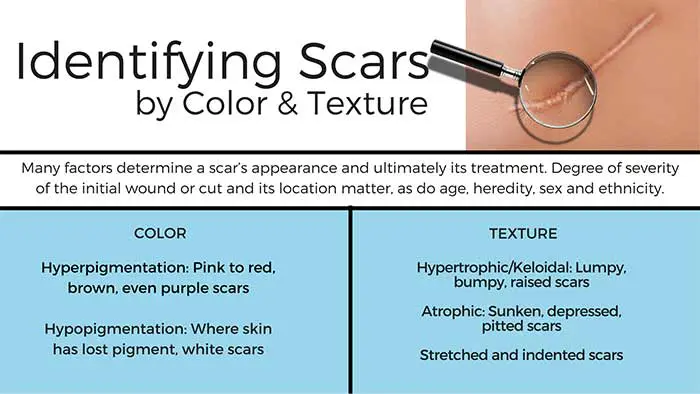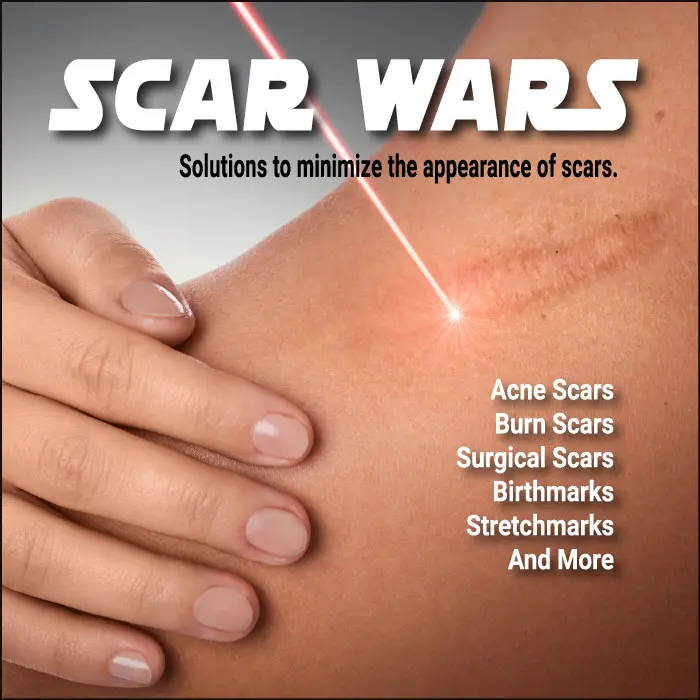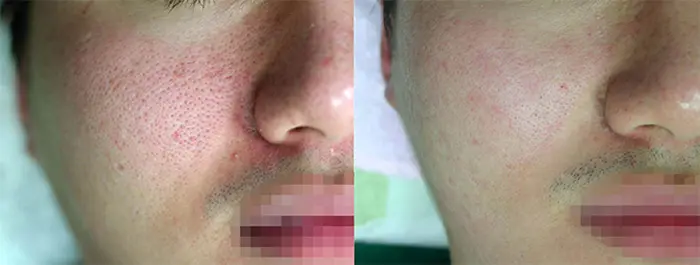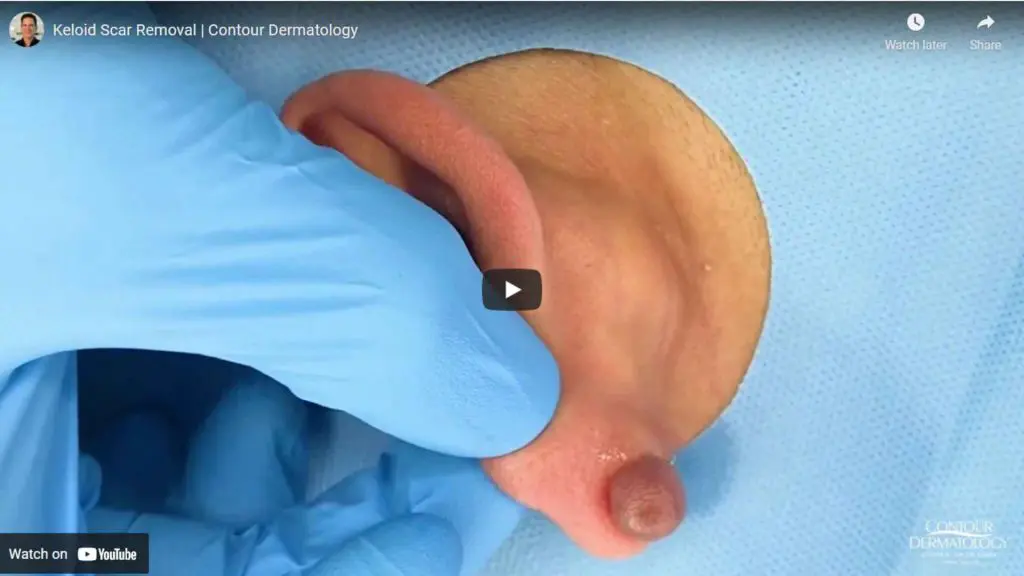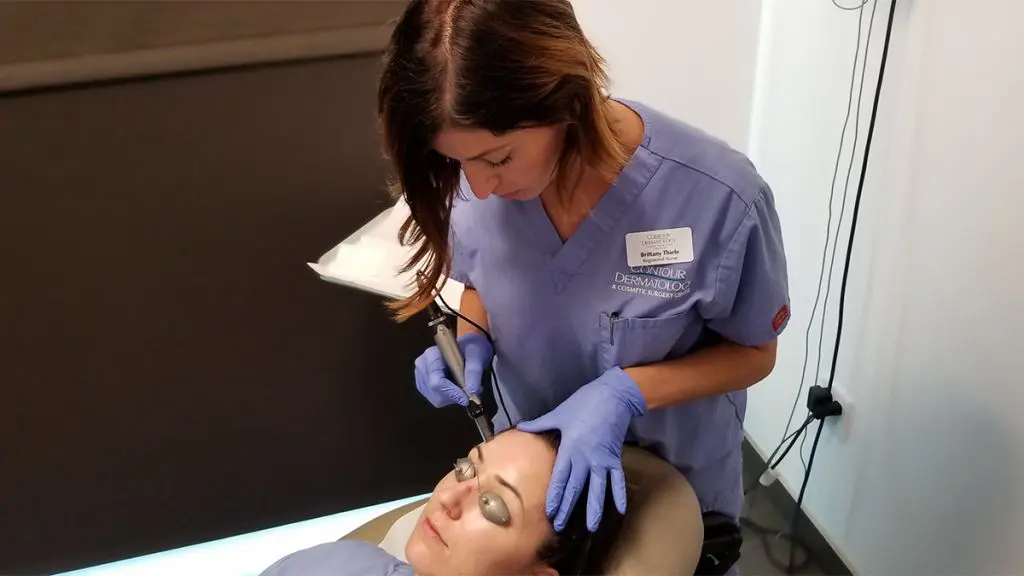Identifying Scars by Color
Pink to red, brown, even purple scars: Cases of darker skin discoloration are known as hyperpigmentation.
White scars: Cases where skin has lost pigment are known as hypopigmentation.
Identifying Scars by Texture
Lumpy, bumpy, raised scars: When the body creates too much collagen at the site, hypertrophic or keloidal scars occur.
Sunken, depressed, pitted scars: When underlying skin support structures such as fat or muscle are lost, atrophic scars occur.
Stretched, indented scars: Commonly referred to as stretch marks are the result of rapid skin expansion – think growth spurts and pregnancy.
Many factors determine a scar’s appearance and ultimately its treatment. Degree of severity of the initial wound or cut and its location matter, as do age, heredity, sex and ethnicity. One thing is certain – a scar is never trivial to the person involved. Contour Dermatology realizes this and considers each circumstance carefully before recommending a course of action. Sometimes a lone method triumphs. Other times a combination of treatments is necessary to achieve optimum results. “What’s exciting is the challenge of making a scar look like normal skin,” says Dr. Jochen. “I not only try to make it look better, I want to make it so no one can ever tell you had a scar.”


